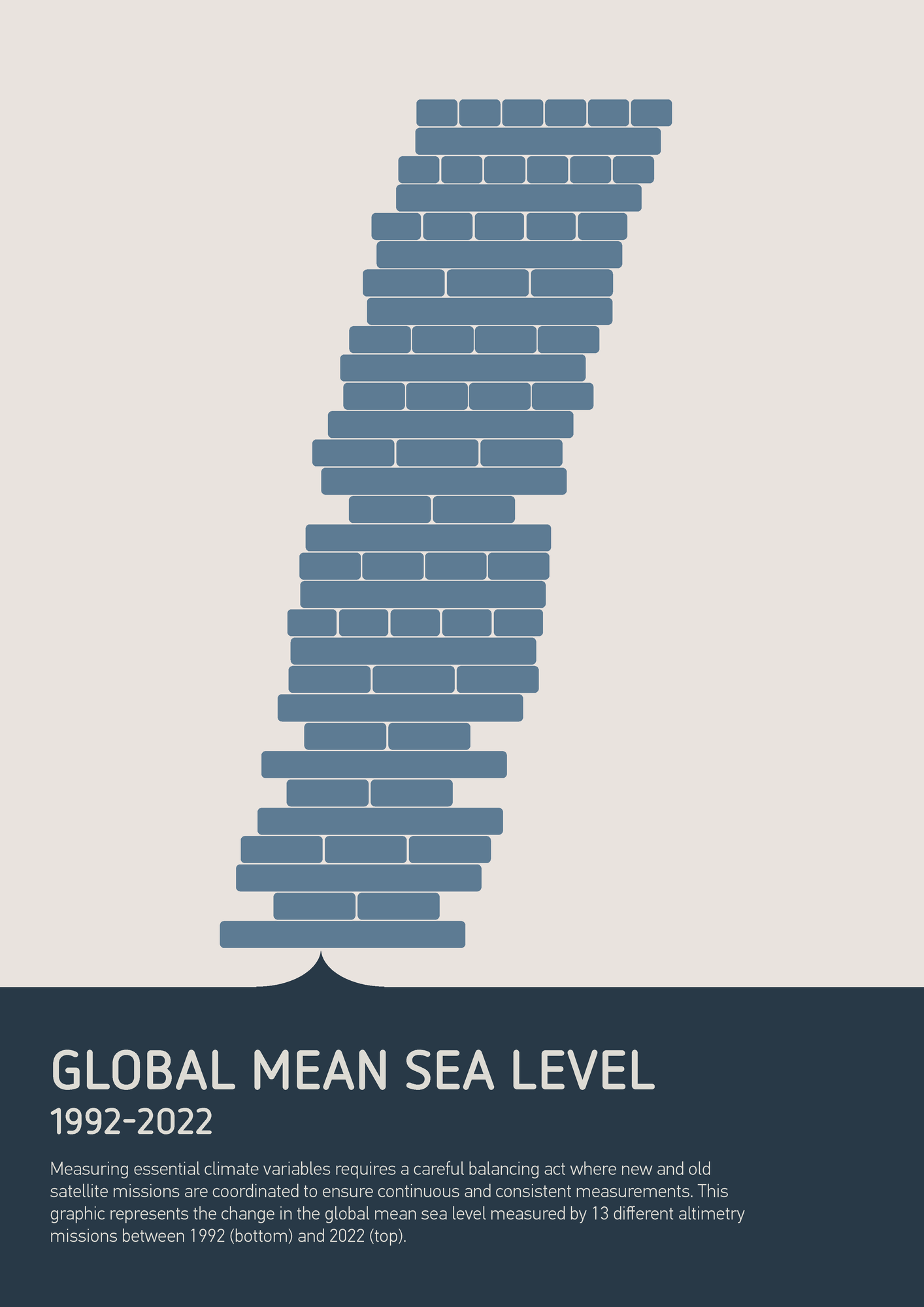Multiple satellite missions are needed to accurately determine and maintain long-term records of global sea-level. This graphic represents the 13 missions that have monitored sea-level over the past 30 years. In each viewer facing level of the 'Jenga tower', the blocks represent the
number of missions contributing to the time series in a given year. The total lean of the tower vs the balance point represents the rise in sea-level over this time, with the shift at each level representing the average of the mission observations for that year.

About
The Little Picture represents the change in the global mean sea level measured by 13 different altimetry missions between 1992 (bottom) and 2022 (top). This graphic represents the 13 missions that have monitored sea-level over the past 30 years. In each viewer facing level of the 'Jenga tower', the blocks represent the number of missions contributing to the time series in a given year. The total lean of the tower vs the balance point represents the rise in sea-level over this time, with the shift at each level representing the average of the mission observations for that year.
Data
The Little Picture uses the following dataset:
- Multimission_MSL.csv (Data provided by EUMETSAT)
Code
The code and documentation used to build this Little Picture can be found here - Calculate_annual_mean_MSL-Change.py (Data provided by EUMETSAT)
Licence
This Little Picture is published under CC BY-SA 4.0 licence.
The big picture
The European Space Agency (ESA), the European Centre for Medium-Range Weather Forecasts (ECMWF), and the European Organisation for the Exploitation of Meteorological Satellites (EUMETSAT) work closely together to measure, process & make space-derived information about the climate available.
ESA
The mission of the Climate Change Initiative (CCI) is to realise the full potential of the long-term global Earth Observation archives that the European Space Agency (ESA), together with its Member states, has established over the past 40 years, as a significant and timely contribution to the climate databases required by the United Nations Framework Convention on Climate Change. The ESA Climate Office provides a free & open CCI data facility bringing together ECV data from across its twenty-seven climate science projects, including a CCI Data Standards and a CCI Toolbox.
ECMWF
The Copernicus Climate Change Service (C3S) supports society by providing freely available authoritative information about the past, present and future climate in Europe and the rest of the World. C3S is one of the six thematic information services provided by the Copernicus Earth Observation Programme of the European Union, and has been entrusted by the European Commission to the European Centre for Medium-Range Weather Forecasts (ECMWF). One of the core components of C3S includes the Climate Data Store (CDS). This is a one-stop shop for climate information. It provides free and easy access to a wide range of climate datasets via a searchable catalogue. A freely available online toolbox allows users to build workflows and applications suited to their needs.
EUMETSAT
EUMETSAT operates missions both to provide weather and climate data for its member states, and as an entrusted entity under the Copernicus programme. Several missions are operated collaboratively with ESA, providing complimentary expertise and data processing, to process and distribute land, marine, and atmosphere relevant products for users. Data from EUMETSAT operated missions is frequently available in near-real-time, facilitating rapid monitoring and forecasting. Via EUMETCast, the EUMETSAT Data Services, or WEkEO, users can access data in ways that suit their needs. The data is used by the EUMETSAT satellite applications facilities, as well as across the various Copernicus Services.

